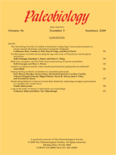
PALEOBIOLOGY
Scope & Guideline
Charting the Course of Paleontological Discoveries
Introduction
Aims and Scopes
- Paleobiological Evolution and Diversity:
Research on the evolution of various organisms, focusing on their morphological changes, diversification patterns, and the ecological factors influencing these processes. - Paleoecology and Environmental Interactions:
Studies examining the interactions between ancient organisms and their environments, including biotic and abiotic factors that may have influenced past ecosystems. - Quantitative Methods in Paleobiology:
Utilization of quantitative approaches and models to analyze paleobiological data, including morphometrics, phylogenetic analysis, and statistical methods. - Taphonomy and Fossil Preservation:
Investigation into the processes affecting fossil preservation and how these processes impact our understanding of past life and environments. - Conservation and Modern Implications:
Linking paleobiological research with contemporary conservation efforts, particularly in understanding biodiversity loss and informing strategies for current ecosystems.
Trending and Emerging
- Quantitative and Computational Approaches:
An increasing trend towards using quantitative methods and computational models to analyze paleobiological data, reflecting a broader movement towards data-driven research in the sciences. - Interdisciplinary Research Linking Paleobiology and Conservation:
A growing emphasis on aligning paleobiological research with conservation efforts, particularly in understanding historical biodiversity patterns to inform current conservation strategies. - Evolutionary Developmental Biology (Evo-Devo):
Emerging interest in the relationship between evolution and developmental biology, particularly how developmental mechanisms influence evolutionary trajectories across geological timescales. - Paleoecological Modeling and Climate Change Studies:
Enhanced focus on modeling past ecosystems and their responses to climate change, providing insights into resilience and adaptation that are relevant to current environmental challenges. - Technological Innovations in Fossil Analysis:
The incorporation of new technologies such as machine learning and advanced imaging techniques to analyze fossil data and infer paleobiological patterns is on the rise, offering fresh perspectives on traditional research questions.
Declining or Waning
- Traditional Morphological Studies:
There has been a decline in purely descriptive morphological studies that do not incorporate quantitative analyses or evolutionary implications, as the field increasingly favors integrative approaches. - Single-Discipline Focused Research:
Research that focuses solely on paleontology without interdisciplinary integration is becoming less common, as there is a growing emphasis on collaborations with other scientific fields such as ecology, geology, and climate science. - Descriptive Taphonomy without Analytical Framework:
Studies that describe taphonomic processes without applying robust analytical frameworks or linking them to broader ecological or evolutionary questions are appearing less frequently.
Similar Journals
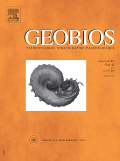
GEOBIOS
Bridging Earth Sciences and Cosmic DiscoveriesGEOBIOS is a prominent academic journal published by Elsevier France-Editions Scientifiques Medicales Elsevier, specializing in the fields of Paleontology, Space and Planetary Science, and Stratigraphy. With a rich publication history dating back to 1966, the journal aims to foster scholarly communication and dissemination of significant research findings among professionals and researchers in earth sciences. Recognized for its impact within the scientific community, GEOBIOS holds a respectable Q2 ranking in several categories, positioning it within the top tiers of scientific journals. Despite its traditional publication format, the journal provides a platform for groundbreaking studies that influence our understanding of both the geological past and future planetary developments. The journal's consistent ranking, including Rank #36 in Paleontology and Rank #59 in Space and Planetary Science, underscores its relevance and significance in its field. GEOBIOS serves as an essential resource for those engaged in the exploration of earth's history and its extraterrestrial counterparts, making it invaluable to researchers, students, and professionals alike.
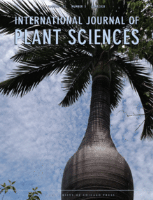
INTERNATIONAL JOURNAL OF PLANT SCIENCES
Pioneering insights in plant sciences since 1983.The INTERNATIONAL JOURNAL OF PLANT SCIENCES, published by UNIV CHICAGO PRESS, is a leading journal dedicated to advancing knowledge in the fields of plant sciences and ecology. With an ISSN of 1058-5893 and an E-ISSN of 1537-5315, this journal has been a prominent platform for groundbreaking research since its establishment, featuring works from 1983 to present. It holds an impressive Q2 ranking in both Ecology, Evolution, Behavior and Systematics and Plant Science, reflecting its reputable standing within the academic community. The journal is well-regarded for its rigorous peer-review process and commitment to high-quality publication standards, making it a favored choice for researchers, students, and professionals eager to engage with the latest findings and innovative methodologies in plant research. While it does not currently operate under an Open Access model, the journal provides ample access options for institutions and individuals keen to explore its curated content. By presenting diverse studies that blend theoretical and practical insights, the INTERNATIONAL JOURNAL OF PLANT SCIENCES plays a critical role in fostering interdisciplinary dialogue and advancing the frontiers of plant science research.

PALAEONTOGRAPHICA ABTEILUNG A-PALAOZOOLOGIE-STRATIGRAPHIE
Decoding Earth's Layers: Your Resource for Pioneering ResearchPalaeontographica Abteilung A-Palaozoologie-Stratigraphie is a prominent academic journal that serves as a vital resource for researchers in the fields of Paleontology and Stratigraphy. Published by E Schweizerbart'sche Verlagsbuchhandlung in Germany, this journal has been instrumental in disseminating cutting-edge research from 1996 to 2024. With an established reputation highlighted by its Q3 ranking in both Paleontology and Stratigraphy, it ranks 26th among 113 journals in Paleontology and 15th among 55 in Stratigraphy, showcasing its significance within the scientific community. Although it does not currently offer open access, the journal provides an invaluable platform for the exchange of innovative ideas and findings in paleobiological and stratigraphic studies. As such, Palaeontographica continues to attract contributions from leading academics, making it an indispensable publication for professionals and students alike who are eager to advance their understanding of Earth's historical biological and geological patterns.

LETHAIA
Advancing the Frontiers of Paleontological ResearchLETHAIA, an esteemed journal published by Scandinavian University Press - Universitetsforlaget AS, serves as a vital platform for the dissemination of innovative research in the fields of paleontology as well as ecology, evolution, behavior, and systematics. Established in 1968 and continuing its impactful journey until 2024, LETHAIA has consistently contributed to advancing scientific understanding of Earth's biological and geological history. With a 2023 impact factor placing it in the Q2 category for both Paleontology and Ecology, Evolution, Behavior and Systematics, the journal is recognized for its high-quality, peer-reviewed articles that engage and challenge the academic community. Researchers, professionals, and students alike will find LETHAIA to be an indispensable resource for the latest findings, methodologies, and theoretical advancements in these interlinked disciplines.
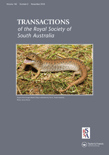
TRANSACTIONS OF THE ROYAL SOCIETY OF SOUTH AUSTRALIA
Uncovering insights in anthropology, agriculture, and beyond.TRANSACTIONS OF THE ROYAL SOCIETY OF SOUTH AUSTRALIA, published by Taylor & Francis Ltd, is a prominent scholarly journal dedicated to advancing research across diverse fields including anthropology, agricultural and biological sciences, environmental science, and paleontology. With an ISSN of 0372-1426 and an E-ISSN of 2204-0293, this journal is vital for researchers and professionals seeking to expand their knowledge and contribute to ongoing discourse in these important areas of study. Recognized for its impact, the journal holds a respectable ranking within various disciplines, including a Q2 in Anthropology and Q3 in Agricultural and Biological Sciences as of 2023. Despite its Q4 ranking in Paleontology, the journal remains a crucial platform for sharing groundbreaking research and fostering collaboration among experts. Although it does not currently offer open access options, TRANSACTIONS OF THE ROYAL SOCIETY OF SOUTH AUSTRALIA continues to uphold excellence in scholarship and strives to engage a global audience of academics and practitioners. The journal has a rich publication history, with coverage spanning from 1979 to 1981 and 1996 to 2024, making it a well-established source of insightful research in its fields.

Arthropod Systematics & Phylogeny
Illuminating the path of arthropod evolution and diversity.Arthropod Systematics & Phylogeny is a pivotal journal published by the SENCKENBERG NATURHISTORISCHE SAMMLUNGEN DRESDEN, MUSEUM TIERKUNDE in Germany, dedicated to advancing the understanding of arthropod systematics, phylogenetics, and evolutionary biology. With an ISSN of 1863-7221 and an E-ISSN of 1864-8312, this journal has established itself as a reputable source for high-quality research, evident by its ranking in the Q1 category for Insect Science and Q2 in Genetics. Covering a spectrum of subjects within the realms of agricultural and biological sciences, it caters to a diverse audience of researchers, professionals, and students eager to explore the intricate relationships and evolutionary histories of diverse arthropod taxa. The journal has been consistently publishing impactful studies since its inception in 2009, with ongoing contributions expected to bolster its presence in the academic community through 2024 and beyond. Although it currently does not offer open access options, its rich content serves as a valuable resource for those passionate about entomology and genetics, fostering collaboration and innovation in an important area of biological research.
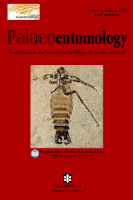
Palaeoentomology
Charting Evolutionary Journeys: Insights from PalaeoentomologyPalaeoentomology is a leading journal dedicated to the study of fossil insects, fostering a deeper understanding of historical biodiversity and ecosystem dynamics. Published by MAGNOLIA PRESS, this journal provides an essential platform for researchers, educators, and students interested in entomological paleontology and related disciplines. Featuring a wide range of articles that explore fossil records, evolutionary patterns, and paleoenvironments, it serves the scientific community by enriching our understanding of the past. Although currently not open access, the journal prioritizes rigorous peer-review standards and aims to maintain a high impact factor, ensuring that published research meets the evolving demands of the field. Based in Auckland, New Zealand, it welcomes contributions from both established and emerging scientists worldwide, contributing to a vibrant discourse in the study of ancient insects and their ecological relationships.
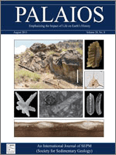
PALAIOS
Illuminating Historical Biodiversity PatternsPALAIOS is a renowned journal published by the SEPM-Society for Sedimentary Geology, focusing on the interdisciplinary fields of paleontology and sedimentary geology. Established in 1986, this scholarly publication serves as a vital platform for disseminating innovative research and insightful reviews that bridge ecological and evolutionary aspects with paleontological studies. With an impressive track record, the journal has achieved a commendable impact factor and consistently holds a Q2 ranking in both Ecology, Evolution, Behavior and Systematics and Paleontology as of 2023. Researchers and professionals will benefit from the diverse range of studies presented, which encompass fossil analysis, stratigraphy, and the impacts of climate change on past ecosystems. By being at the forefront of research and education in these fields, PALAIOS not only enhances comprehension of historical biodiversity patterns but also informs contemporary ecological theories.
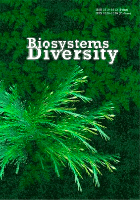
Biosystems Diversity
Connecting Scholars in the Quest for BiodiversityBiosystems Diversity is an esteemed open access journal published by the Oles Honchar Dnipro National University since 2009, based in Ukraine. Focusing on a wide array of topics within the fields of Ecology, Evolution, Behavior, and Systematics, the journal aims to foster the dissemination of cutting-edge research and innovative methodologies in understanding biodiversity and ecological interactions. With its ISSN 2519-8513 and E-ISSN 2520-2529, Biosystems Diversity has seen a consistent growth trajectory, earning a Q3 category for Ecology and a Q4 classification for Ecology, Evolution, Behavior and Systematics as of 2023, reflecting its dedication to high standards of scholarly excellence. The journal's rankings in Scopus solidify its relevance in the academic community, providing researchers and practitioners with vital insights into contemporary environmental challenges. As it converges towards its 2024 target, Biosystems Diversity continues to empower scientists, students, and professionals alike to explore new dimensions in the study of biological systems, offering crucial open access options for broader reach and engagement.

NAUTILUS
Charting New Waters in Aquatic ResearchNAUTILUS is a distinguished journal published by the Bailey-Matthews Shell Museum, dedicated to advancing the understanding of aquatic sciences as well as ecology, evolution, behavior, and systematics. With an ISSN of 0028-1344, NAUTILUS has played a significant role in the scholarly community from its inception, with publication converged between 1996 to 2015 and 2017 to 2024. Although currently categorized as Q4 in Aquatic Science and Ecology, Evolution, Behavior and Systematics for 2023, the journal has a reputation for publishing high-quality research that contributes to the broader scientific discourse. Researchers and students alike can benefit from the insights provided by NAUTILUS, which remains committed to exploring the intricate relationships within aquatic ecosystems. Its editorial management, led by Dr. José H. Leal, ensures rigorous peer review and academic excellence, making it a crucial resource for those dedicated to discovering the complexities of aquatic and ecological research.